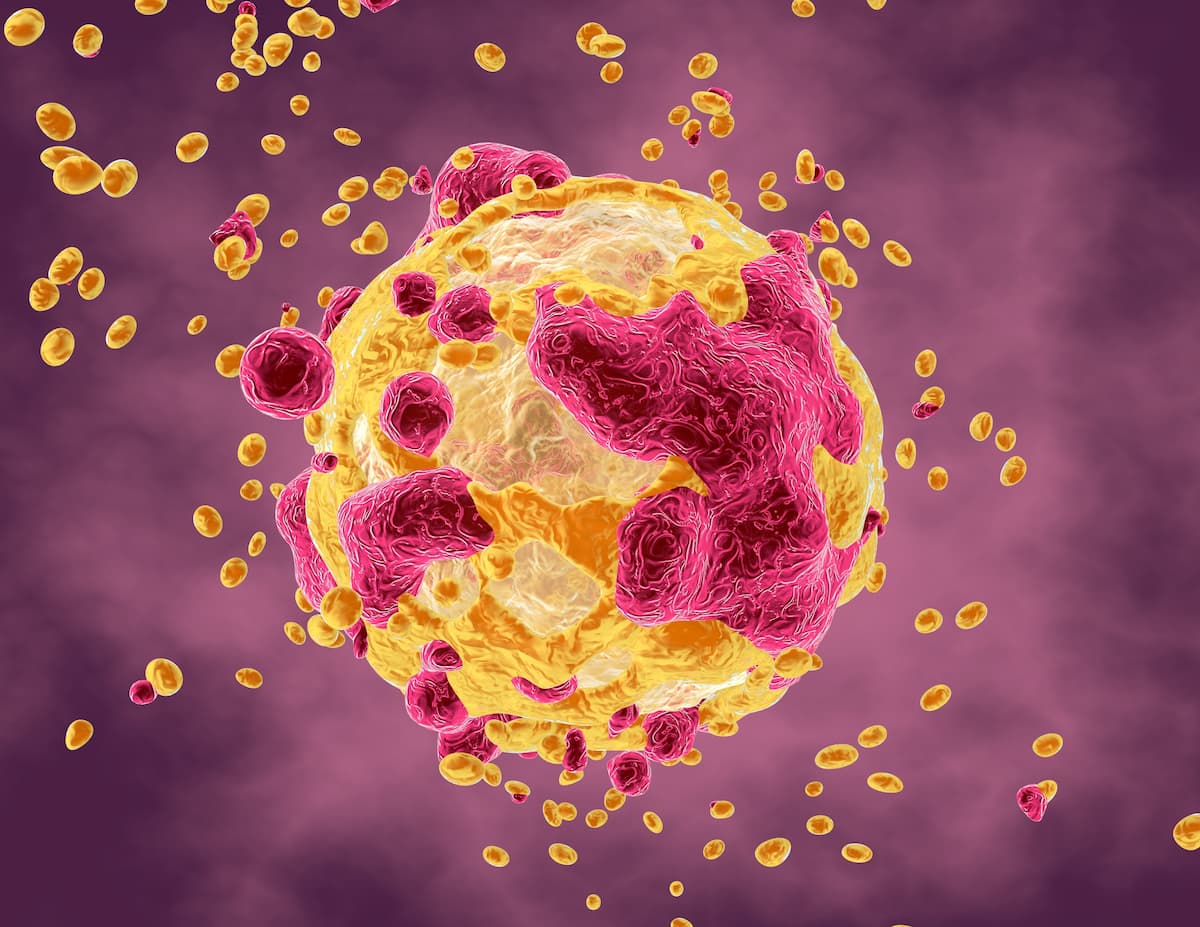KIT Mutational Status Correlates With Response in Advanced GIST
An expert from the Smilow Cancer Hospital and Yale Cancer Center indicates that findings from the ctDNA analysis of the phase 3 INTRIGUE study were “provocative” and that the subsequent phase 3 INSIGHT study has the potential to be practice changing should data be positive.
KIT mutational status was associated with response to treatment with ripretinib (Qinlock) or sunitinib (Sutent) in the second-line for patients diagnosed with advanced imatinib (Gleevec)–resistant gastrointestinal stromal tumors (GIST), according to a circulating tumor DNA (ctDNA) analysis of the phase 3 INTRIGUE study (NCT03673501).
Findings from the analysis were presented during the January 2023 American Society of Clinical Oncology (ASCO) Plenary Series indicating that patients with a KIT exon 11 + 13/14 ATP-binding pocket mutation experienced a median progression-free survival (PFS) of 4.0 months (95% CI, 1.5-7.1) after treatment with ripretinib and 15.0 months (95% CI, 5.6-not estimable [NE]) with sunitinib (HR, 3.94; 95% CI, 1.71-9.11; P = .0005).
Patients with advanced imatinib-resistant gastrointestinal stromal tumors and a KIT exon 11 + 13/14 mutation may experience the most benefit from sunitinib while those with a KIT exon 11 + 17/18 mutation may benefit from ripretinib.

The median overall survival (OS) was 24.5 months (95% CI, 13.5-NE) in the ripretinib arm and NE in the sunitinib arm (95% CI, 19.5-NE; HR, 1.75; 95% CI, 0.72-4.24; P = .2085). In the KIT exon 11 + 17/18 activation loop mutation population, the median OS was NE (95% CI, 24.4-NE) and 17.5 months (95% CI, 7.9-30.9) in the ripretinib and sunitinib arms, respectively (HR, 0.34; 95% CI, 0.15-0.76; P = .0061).
Additionally, the median PFS for the KIT exon 11 + 17/18 activation loop mutation population for each respective group was 14.2 months (95% CI, 8.1-NE) and 1.5 months (95% CI, 1.4-4.2; HR, 0.22; 95% CI, 0.11-0.44; P = .0001). The objective response rate (ORR) was 44% (95% CI, 23.0%5-62.7%; P = .0001) in the ripretinib arm vs 0% in the sunitinib arm.
“They looked specifically at two different types of KIT mutations,” according to Pamela Kunz, MD, an associate professor of Internal Medicine, director of the Center for Gastrointestinal Cancer, and Vice Chief of Diversity, Equity, and Inclusion, Medical Oncology, at the Smilow Cancer Hospital and Yale Cancer Center, New Haven, Massachusetts, in an interview with CancerNetwork®.
She continued, “One was a KIT exon 11 + 13/14 mutation ATP-binding pocket mutation. Those patients who had that mutation had a greater clinical benefit from sunitinib not ripretinib. Then a second mutation in KIT exon 11 + 17/18, which is the activation loop mutation, had greater benefit from ripretinib compared with sunitinib. [These are] really interesting results demonstrating that these 2 mutations have very different responses to these Tyrosine kinase inhibitors.”
The primary analysis of the INTRIGUE study indicated that ripretinib did not appear superior to sunitinib for second-line GIST based on PFS data including the overall population and patients with KIT exon 11 mutations. However, investigators conducted a ctDNA analysis to gain more insight into imatinib resistance mutations.
The study included patients who were 18 years or older, had a confirmed GIST diagnosis, and had progressed on or were intolerant to imatinib. Enrollment took place at 122 sites in North and South America, Europe, Australia, and Asia. Patients were stratified based on mutational status and intolerance to imatinib.
Patients who enrolled in the open-label study were randomly assigned 1:1 to receive either 150 mg of ripretinib continuously or 50 mg of sunitinib with with a schedule of 4 weeks on, and 2 weeks off. There was no crossover option. ctDNA analysis was conducted using Guardant360.
The primary end point was PFS by independent radiologic review.
A total of 453 patients were randomized, 374 of whom provided a sample. Of these samples, 362 underwent ctDNA analysis and 280 samples were positive for ctDNA. A total of 213 patients tested positive for a KIT mutation, including 109 in the ripretinib arm and 104 in the sunitinib arm. Additionally, 41 patients had a KIT ATP-binding pocket mutation and 52 had a KIT activation loop mutation.
In another subgroup with co-mutations, ripretinib yielded a median PFS of 8.1 months vs 10.9 months with sunitinib (HR, 1.07; 95% CI, 0.41-2.84). Moreover, the ORR in each respective group was 27.3% vs 9.1% and the median OS was 14.7 months and 20.3 months (HR, 2.61; 95% CI, 0.95-7.19).
Follow-up anticancer therapies in the activation loop population that received ripretinib included sunitinib (67%), regorafenib (Stivarga; 26%), and imatinib (3.7%). Additionally, subsequent therapies following sunitinib included regorafenib (48%), ripretinib (40%), sunitinib (4.0%), and imatinib (4.0%).
Thirty-three percent of patients treated with ripretinib experienced grade 3/4 drug-related treatment-emergent adverse effects (TEAEs) vs 50% in the sunitinib arm. Common any-grade TEAEs in the ripretinib arm included alopecia (78%), constipation (52%), and fatigue (48%) compared with hypertension (50%), palmar-plantar erythrocythemia syndrome (42%), and diarrhea (38%) in the sunitinib arm.
Ripretinib and sunitinib will be further evaluated as part of the randomized, multicenter, open-label phase 3 INSIGHT study in patients with advanced GIST that were previously treated with imatinib and KIT exon 11+17 and/or 18 mutations.
“We’re not quite ready for this to be practice changing,” Kunz said. “The [INSIGHT trial] will potentially be the definitive study. If it confirms what was found in this secondary analysis of the INTRIGUE study, that has the potential to be practice changing. What we've learned in this secondary analysis of the INTRIGUE study is really provocative. It's not yet practice changing [due to its] a small number of patients, but it also raises this interesting question as to howwe can apply this to other cancers.
Reference
Bauer S, Jones RL, Gelderblom H, et al. Mutational heterogeneity of imatinib resistance and efficacy of ripretinib vs sunitinib in patients with gastrointestinal stromal tumor: ctDNA analysis from INTRIGUE. J Clin Oncol; 41(36):397784. doi:10.1200/JCO.2023.41.36_suppl.397784
Newsletter
Stay up to date on recent advances in the multidisciplinary approach to cancer.